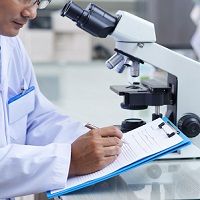News
Article
Heat Shock Protein 90 Inhibition with RGRN-305 Shown to Help Treat HS
Author(s):
These findings suggest the need for additional clinical evaluations in trials on a larger scale to allow for confirmation of the efficacy and safety of the treatment.

Inhibiting heat shock protein (HSP) 90 using RGRN-305 saw positive results and could represent a novel approach for treatment of hidradenitis suppurativa (HS), according to recent findings, underscoring the value of additional assessment in larger studies.1
These results came from a new proof-of-concept study examining the feasibility of utilizing HSP90 inhibition to work as a novel mechanism of action in the treatment of HS. The investigators noted that prior to their research, orally-dosed HSP90 inhibitors led to meaningful clinical improvement, inhibition of IL17-A, TNF, and IL-23 signaling pathways, and acceptable safety findings, adding to the potential for such a treatment.2
The team’s new proof-of-concept research was led by Hakim Ben Abdallah, MD, from the Aarhus University Hospital’s Department of Dermatology and Venereology in Denmark.
“This proof-of-concept randomized clinical trial aimed to investigate the efficacy and safety of RGRN-305 in patients with moderate to severe hidradenitis suppurativa,” Abdallah and colleagues wrote. “To our knowledge, this is the first randomized placebo-controlled trial evaluating HSP90 inhibition as a novel mechanism of action for treating hidradenitis suppurativa.”
Background and Findings
The investigators implemented a double-blind, placebo-controlled clinical trial design and conducted their research at Aarhus University Hospital in the country of Denmark, assessing a proof-of-concept for the treatment of individuals with moderate-to-severe HS. The team’s research spanned 1-30 days for screening, then 16 weeks involving treatment, and 4 weeks involving follow-up.
Approval for their study protocol was given to the investigators by the Central Denmark Regional Ethical Committee and the Danish Medical Agency, with monitoring done by the Good Clinical Practice unit featured at Aarhus University Hospital. Every one of the enrolled patients, aged 18 and up, were known to have a total abscess and inflammatory nodule count of ≥6 in a minimum of 2 distinct anatomic areas at the time of their screening and baseline meeting.
In addition, they were required to have negative tuberculosis infection tests at the point of their screening visits. No financial compensation was given to the study participants.
The subjects involved in the research were randomly assigned in a 2:1 ratio to be treated with an oral RGRN-305 tablet of 250-mg, otherwise they would receive matching placebo once-per-day for 16 total weeks.
Regarding the efficacy endpoints of the investigators, the primary one was the percentage of participants with Hidradenitis Suppurativa Clinical Response 50 (HiSCR-50) at the 16-week mark. The research team determined their secondary efficacy endpoints to be HiSCR-75 or HiSCR-90, Dermatology Life Quality Index scores, Hidradenitis Suppurativa Physician’s Global Assessment, as well as pain numeric rating scale.
The investigators looked at safety by an evaluation of adverse events, measurements done in clinical laboratory settings, physical examinations, and the use of electrocardiograms.
A total of 15 participants, with 67% being and the median age being 29 years, took part in the study and were included in all the team’s analyses. Among those in the RGRN-305 arm, 60% were found to have gotten the primary endpoint HiSCR-50 at 16 weeks, as opposed to 20% among the placebo arm.
The investigators reported substantial improvements in all of their secondary endpoints at 16 weeks, with higher rates of the challenging HiSCR levels being seen. They found that 50% reported HiSCR-75 and 30% reported HiSCR-90 in the RGRN-305 arm, adding that none in the placebo arm reported these levels.
RGRN-305 was overall shown by the research team to have good tolerability, with no mortality or serious adverse events being seen, and treatment-emergent adverse events were seen at similar frequencies in both RGRN-305 and placebo groups.
“These data warrant further clinical evaluations in larger trials to provide confirmation of the efficacy and safety of the drug, but also to explore this novel mode of action in other immune-mediated skin disorders,” they wrote.
References
- Ben Abdallah H, Bregnhøj A, Emmanuel T, Ghatnekar G, Johansen C, Iversen L. Efficacy and Safety of the Heat Shock Protein 90 Inhibitor RGRN-305 in Hidradenitis Suppurativa: A Parallel-Design Double-Blind Trial. JAMA Dermatol. Published online December 06, 2023. doi:10.1001/jamadermatol.2023.4800.
- Bregnhøj A, Thuesen KKH, Emmanuel T, et al. HSP90 inhibitor RGRN-305 for oral treatment of plaque-type psoriasis: efficacy, safety and biomarker results in an open-label proof-of-concept study. Br J Dermatol. 2022;186(5):861-874. doi:10.1111/bjd.20880.





